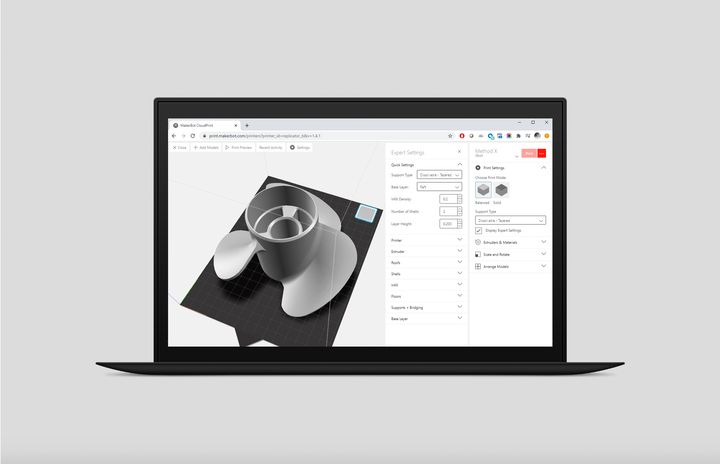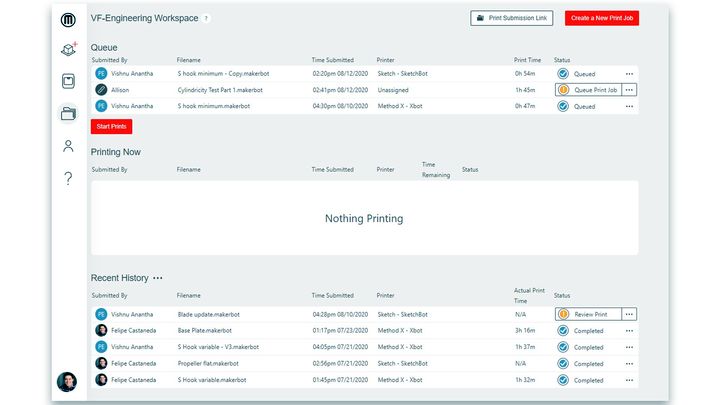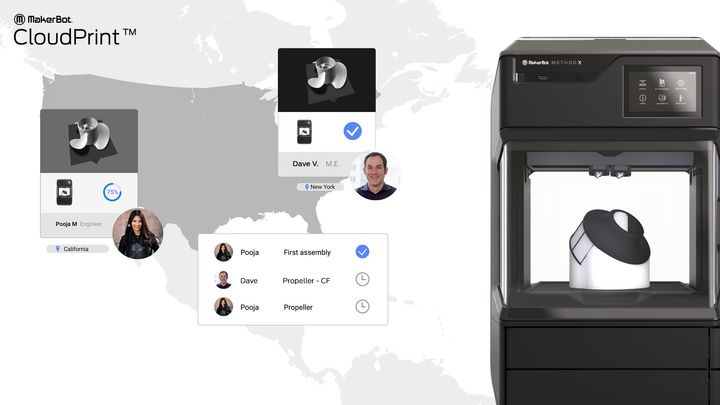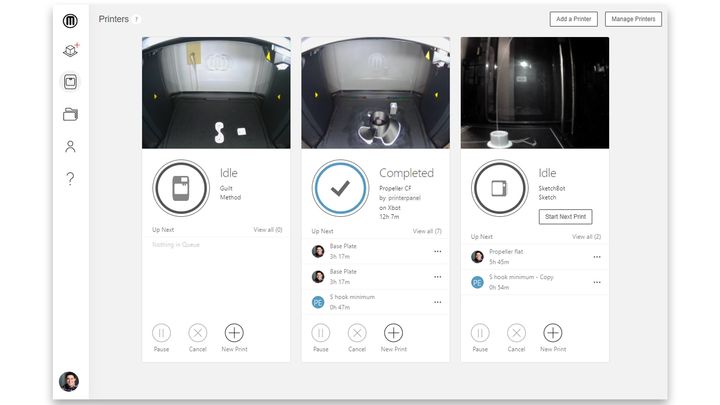
MakerBot announced a new service called MakerBot CloudPrint, which is intended to deliver a seamless 3D printing experience to clients.
MakerBot Print
Up to now MakerBot 3D printer operators would use MakerBot Print to prepare and schedule jobs for attached MakerBot devices. That tool has been around for several years, and it’s proven to be quite useful. When I tested it on the Replicator+ I found the experience using a networked slicing tool to be transformational.
Instead of tediously loading prints onto a stick or card and walking it over to the 3D printer, it was then as simple as pressing “Print” in MakerBot Print, and the file would be sent via network directly to the device. I didn’t have to get out of my chair, which is clearly a good thing.
To accomplish that feat, MakerBot had to establish some elements of the service in the cloud to which MakerBot Print would connect.
MakerBot Cloud
MakerBot took the cloud concept a bit farther when they introduced MakerBot Cloud. This was a browser version of MakerBot Print, which allowed a lot more flexibility for deployment, particularly in group settings. Instead of chasing around individual computers with new versions of software, a cloud system was directly used.
MakerBot Cloud allowed participants to easily slice, queue, print and monitor 3D print jobs regardless of the participant’s location. The company also provided a means to upload CAD file formats directly, rather than first having to convert them into mesh files like STL. Files made in SOLIDWORKS, Autodesk Fusion 360, Autodesk Inventor and Onshape could be loaded directly. This saved some steps and allowed more sophisticated slicing.
MakerBot CloudPrint

Now, it seems that the new MakerBot CloudPrint takes that concept a whole lot farther. It appears that MakerBot has done quite a bit of observation of their clients’ activities and then reworked MakerBot Cloud significantly to make life easier. Along the way, they’ve renamed the product “MakerBot CloudPrint”, too.
It is not a coincidence that MakerBot CloudPrint arrives just as many people are forced to work from home during the pandemic. Like many workers, those using MakerBot equipment have had their workflow notably disturbed by working remotely. In fact, I understand that MakerBot staff themselves have been working at home for months now, likely gaining significant insight into these issues.

What’s so different about MakerBot CloudPrint? MakerBot CEO Nadav Goshen said:
“MakerBot CloudPrint aims to easily adapt to your workflow, no matter how many printers you have. This solution was built with productivity in mind, and we plan to continuously improve the fastest CAD-to-part benefits of the METHOD platform.”
Evidently MakerBot has encountered a number of workflow scenarios in the past while. This is likely due to the appearance of their new MakerBot METHOD line, which is quite attractive to industry. While the company began with individual buyers, now their major client is in fact businesses, and some of them are actually doing production work on the devices. For them very specific workflows will be required, and that, I believe, is the purpose of MakerBot CloudPrint.
They say:
“The new workflow software has been designed to overcome common challenges associated with 3D printing, such as optimizing utilization, managing print jobs, and collaborating with team members. MakerBot CloudPrint provides a faster and more advanced print preparation and management solution to enable users to be more productive. The solution gives users more visibility into and control over their print jobs, from mass production to team projects to individually queued jobs. MakerBot CloudPrint allows users to prioritize print jobs by project or reorder the print queue based on shifting priorities. With MakerBot CloudPrint, teams can easily share access to connected MakerBot 3D printers even when working remotely. MakerBot CloudPrint is also integrated with Google products, allowing users to access MakerBot applications with familiar tools.”
There’s also this:
“MakerBot CloudPrint also reduces the time-consuming process of printer maintenance with remote control access for automated material handling, build plate leveling, extruder calibration, and more.”

This is perhaps the first time I’ve heard of such functions being able to be done remotely. Normally one has to be physically present at the device in order to perform these calibrations, but it seems that MakerBot has designed their equipment to allow for remote calibration.
MakerBot intends to update the features and capabilities within MakerBot CloudPrint in the future. That’s no doubt made a lot easier as it is a browser-based tool, and they’re going to take full advantage of it.
Via MakerBot CloudPrint
